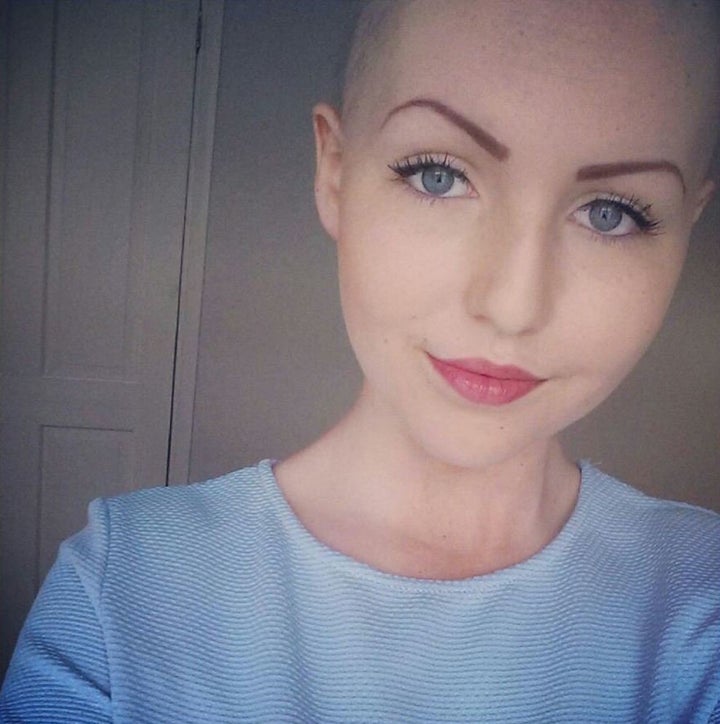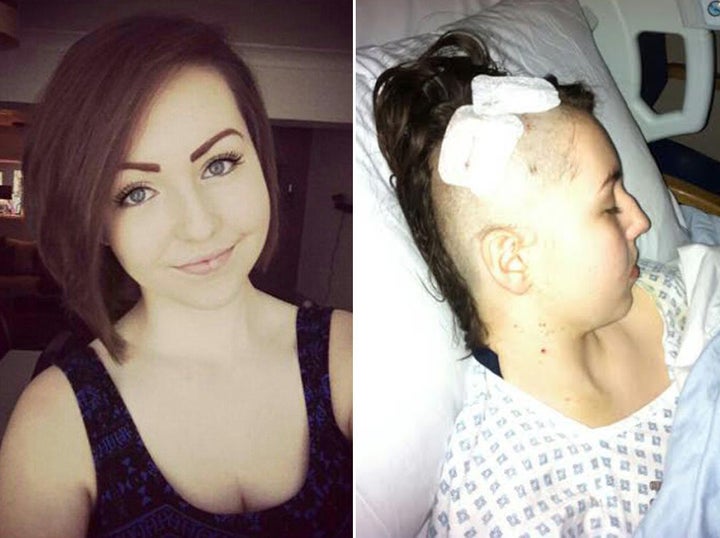An 18-year-old who suffered from severe back pain and terrible migraines has told of how doctors dismissed her debilitating symptoms and even accused her of lying.
She was later diagnosed with an incurable brain tumour.
Amanda Day, 18, is now sharing her story to raise awareness of the symptoms of brain tumours and the lack of research and funding in that area.
“It is unbelievable to be told that brain tumours affect so many children and young people,” she said. “Yet just 1% of the national spend on cancer research has been allocated to this devastating disease.”
Her tumour will inevitably return, but for now, Amanda is looking to the future by focusing on achieving A levels in art and design.

Amanda was just 15 years old when she suffered a suspected stroke and collapsed at school while studying for her GCSEs.
It should’ve raised alarm bells, but she claimed that doctors simply waved off her symptoms.
“I’d been suffering from severe migraines and crippling pain in my back but no-one apart from my mum was taking me seriously,” she recalled.
“We attended so many medical appointments that I lost count and, even after being taken to hospital by ambulance when I collapsed, we were still dismissed.
“I had a CT scan but nothing was picked up and my double vision, shortness of breath and the unbearable back pain were blamed on ‘complex migraines’.”
Amanda’s mum watched her daughter’s health slowly decline before her eyes. Sometimes she was unable to leave the house because she was in so much pain.
“If it hadn’t been for mum insisting on an MRI scan, I wouldn’t be here today,” said Amanda.
Her mum had taken matters into her own hands and noticed that some of Amanda’s symptoms were similar to those caused by hydrocephalus, which had caused her first child to be stillborn.
Armed with those findings, plus a letter from her daughter’s optician who recommended an urgent investigation, the family visited Amanda’s paediatrician.
“When the paediatrician accused me of lying it was the final straw. My dad lost his temper and my mum, the strongest woman I know, was in tears,” she said.
“It had got to the stage where I began to doubt myself.”
In December 2013, Amanda was finally admitted for an MRI scan, which discovered the worst - she had a tumour on her brain stem.
Shockingly, this tumour had showed up on a previous CT scan but had somehow been missed.

“The news was broken to my parents in a phone call on Christmas Eve. I wasn’t told until late on Christmas night,” she recalled.
“Somehow mum and dad had managed to put on a brave face and give us a wonderful Christmas, setting their worst nightmares aside as we enjoyed our festive meal and opened presents.”
Amanda said that the diagnosis upset her immensely but it also made her feel relieved that, finally, people believed her.
On the 30th December, the student went into surgery to remove the tumour, which was located at the top of her spinal column and was attached to the nerves controlling her vision, breathing and consciousness.
The operation went well but disaster struck when Amanda developed an infection in her brain, leaving her in a critical condition and hospitalised for six weeks.
“My blood count was 1,390, way over the 200 which indicates an infection,” she recalled. “I had an external drain fitted to prevent the fluid building up and causing pressure, but was struck down with another infection.
“In my fourth operation I was fitted with another drain, this time permanent, and was diagnosed with acquired hydrocephalus – a complication of my brain tumour – a ghost from my parents’ past.”
After a month of resting up, Amanda was back in hospital for radiotherapy treatment, which left her wheelchair-bound.
She was vomiting up to six times a day and lost one-and-a-half stone.
“I couldn’t bear to be near anything metallic and had to use plastic cutlery. Where previously I had been a chocoholic now I couldn’t bear to be near the stuff,” she said.
Her life as a normal teenager “was over”. She was unable to go out with friends and just about managed to make it to her school prom for an hour.
“I felt isolated and abandoned by my friends,” she said. “It was painful to see on Facebook that my friends were out partying and I couldn’t be a part of that.
“I lost my long hair and my eyebrows. I felt ugly and disgusting and refused to have a photograph taken to add to a patient wall at the hospital.
“Instead, I drew a self-portrait of what I hoped to look like once I was through the treatment.”
Despite her debilitating tumour, which was identified as a pilocytic astrocytoma, Amanda passed her exams at school and went on to study art and design at sixth form.
She said her tumour will inevitably grow back, but nobody can say when that may be - it could be in five or 50 years.
For now, Amanda has follow-up scans every three months and said there’s a high chance she will require more surgery and further treatment in the future.
Her focus is on achieving her A levels and one day setting up her own business.
She also wears her hair short as a reminder of what she’s been through.
“It’s my war wound and I wear it like a trophy which makes me proud of everything that I have been through,” she said.
Visit Brain Tumour Research for more information.